
In a motorsports race, the pole position is usually the best and "statistically the most advantageous" starting position on the track. The pole position is usually earned by the driver with the best qualifying times in the trials before the race, although penalties may award it to the second fastest driver, as the pole position is statistically awarded to the driver starting in first position. The number-one qualifying driver is also referred to as the pole-sitter. The pole position starts the race "at the front of the starting grid. This provides the driver in the pole position the privilege of starting ahead of all the other drivers".
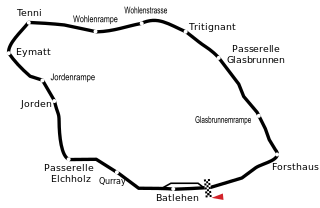
The 1952 Swiss Grand Prix was a Formula Two race held on 18 May 1952 at Bremgarten Circuit. It was the first round of the 1952 World Championship of Drivers, in which each Grand Prix was run to Formula Two rules rather than the Formula One regulations normally used.

The 1952 Belgian Grand Prix was a Formula Two race held on 22 June 1952 at Circuit de Spa-Francorchamps. It was race 3 of 8 in the 1952 World Championship of Drivers, in which each Grand Prix was run to Formula Two rules rather than the Formula One regulations normally used.

The 1952 French Grand Prix was a Formula Two race held on 6 July 1952 at Rouen-Les-Essarts. It was race 4 of 8 in the 1952 World Championship of Drivers, in which each Grand Prix was run to Formula Two rules rather than the Formula One regulations normally used. Unusually this race was run over a duration of 3 hours, rather than a fixed distance.
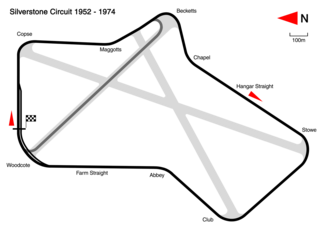
The 1952 British Grand Prix was a Formula Two race held on 19 July 1952 at Silverstone Circuit. It was race 5 of 8 in the 1952 World Championship of Drivers, in which each Grand Prix was run to Formula Two rules rather than the Formula One regulations normally used.

The 1952 Dutch Grand Prix was a Formula Two race held on 17 August 1952 at the Circuit Zandvoort. It was race 7 of 8 in the 1952 World Championship of Drivers, in which each Grand Prix was run to Formula Two rules rather than the Formula One regulations normally used. The 90-lap race was won by Ferrari driver Alberto Ascari after he started from pole position. His teammates Giuseppe Farina and Luigi Villoresi finished in second and third places. Ascari overtook Fangio's record for the most race wins, scoring his seventh at this race.

The 1959 German Grand Prix was a Formula One motor race held at the Automobil-Verkehrs- und Übungs-Straße in West Berlin on 2 August 1959. It was race 6 of 9 in the 1959 World Championship of Drivers and race 5 of 8 in the 1959 International Cup for Formula One Manufacturers. It was the 21st German Grand Prix and was only the second time the race was not held at the Nürburgring. AVUS had previously held the original German Grand Prix in 1926. The race was held over two 30 lap heats of the eight kilometre circuit for a total race distance of 498 kilometres.
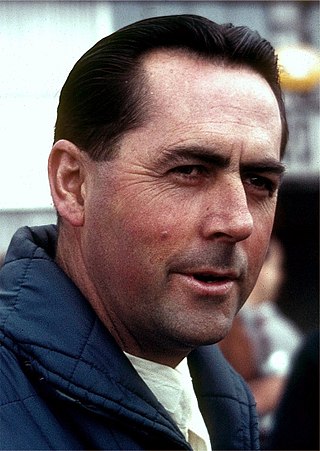
The 1959 Formula One season was the 13th season of FIA Formula One motor racing. It featured the 10th World Championship of Drivers, the second International Cup for F1 Manufacturers and five non-championship Formula One races. The World Championship was contested over nine races between 10 May and 12 December 1959.

The 1957 Formula One season was the 11th season of FIA Formula One motor racing. It featured the 8th World Championship of Drivers which was contested over eight races between 13 January and 8 September 1957. The season also included nine non-championship races for Formula One cars.
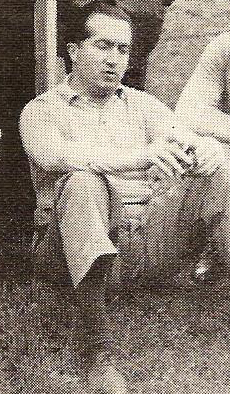
The 1952 Formula One season was the sixth season of FIA Formula One motor racing. It featured the 3rd World Championship of Drivers, which was contested over eight races between 18 May and 7 September 1952. The season also included several non-championship races and a separate East German Championship.

The 1951 Formula One season was the fifth season of FIA Formula One motor racing. It featured the second World Championship of Drivers, which was contested over eight races between 27 May and 28 October 1951. The season also included several non-championship races for Formula One cars.

The 1958 Moroccan Grand Prix, formally the VII Grand Prix International Automobile du Maroc, was a one-off Formula One motor race held at Ain-Diab Circuit, Casablanca on 19 October 1958, after a six-week break following the Italian Grand Prix. It was race 11 of 11 in the 1958 World Championship of Drivers and race 10 of 10 in the 1958 International Cup for Formula One Manufacturers. It is the only time Morocco has hosted a World Championship Grand Prix.

The Race of Two Worlds, also known as the 500 Miglia di Monza, was an automobile race held at the Autodromo Nazionale Monza, Italy in 1957 and again in 1958. It was intended as an exhibition event, allowing American teams from the United States Auto Club (USAC) National Championship to compete directly against teams from the Formula One World Championship based in Europe. The two types of cars competed on the banked oval at Monza which had been completed in 1955. Due to the similarity to the Indianapolis Motor Speedway, where the USAC teams ran the Indianapolis 500, the event earned the nickname Monzanapolis.

Aix-les-Bains, Savoie, France had a race track, called Circuit du Lac, which hosted Formula 2, Formula Junior, and Motorcycle Grand Prix races between 1949 and 1960.
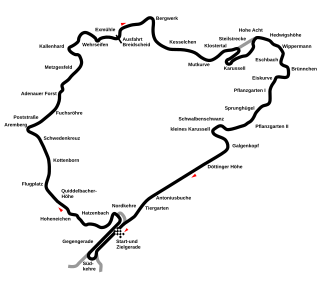
The ADAC 1000 Kilometer Rennen took place on 7 June, on the Nürburgring Nordschleife,. It was also the third round of the F.I.A. World Sports Car Championship.

The 2nd Crystal Palace Trophy was a motor race, run to Formula One rules, held on 19 June 1954 at Crystal Palace Circuit, London. The race was run over two heats of 10 laps and a final of 10 laps.
The 6th Circuit de Cadours was a non-championship Formula One motor race held on 12 September 1954 at the Circuit de Cadours, in Cadours, Tarn-et-Garonne, France. The race, consisting of 2x15 lap heats and a 30 lap final, was won by Jean Behra in a Gordini. Behra's team-mate André Pilette finished second and Louis Rosier in a Maserati was third. Behra and Pilette set joint fastest lap.

The 5th Gran Premio dell'Autodromo di Monza was a Formula Two motor race held on 8 June 1952 at the Monza Circuit, Italy. The race was run over two heats each of 35 laps, with the winner being decided by aggregate time. The winner was Giuseppe Farina in a Ferrari 500, who also set overall fastest lap. Farina's teammate André Simon was second and Rudi Fischer third in a privateer 500. Juan Manuel Fangio suffered a crash in heat 1 on the third lap after suffering extreme fatigue while driving through the night from Dundrod in Northern Ireland to Monza, and he only arrived half an hour before the start. Fangio suffered injuries that sidelined him for the rest of the year. Ferrari driver Alberto Ascari started from pole in both heats and set fastest lap in heat 1 but succumbed to mechanical failure in heat 2. Ascari won heat 1 and Farina won heat 2.
The 4th Circuit de Cadours was a Formula Two motor race held on 14 September 1952 at the Circuit de Cadours, in Cadours, Tarn-et-Garonne, France. The race, consisting of 2x15 lap heats and a 30 lap final, was won by Louis Rosier in a Ferrari 500. Harry Schell finished second in a Gordini Type 16, and set fastest lap, and Emmanuel de Graffenried was third in a Maserati 4CLT/48.

The 5th Circuit du Lac was a Formula Two motor race held on 26 July 1953 at the Aix-les-Bains Circuit du Lac, France. The race was run over two heats each of 50 laps, with the winner being decided by aggregate time. The winner was Élie Bayol in an O.S.C.A. Tipo 20, finishing second and first in the two heats. Louis Rosier was second in a Ferrari 500 and Lance Macklin third in a HWM-Alta. Gordini driver Jean Behra won the first heat and set fastest overall lap during heat 2, and his teammate Harry Schell set pole position and fastest lap for heat 1, but both retired with mechanical problems.

















